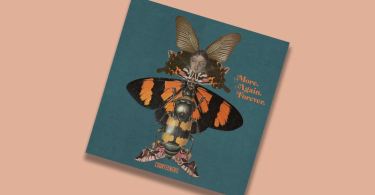For music in the United States, the twentieth century was a beacon, for the genre of jazz began to take shape, beginning in the city of New Orleans with the Dixieland bands, and then evolving as mu
For music in the United States, the twentieth century was a beacon, for the genre of jazz began to take shape, beginning in the city of New Orleans with the Dixieland bands, and then evolving as musicians went to New York, Chicago and other cities to spread the sound that got folks off their feet and dancing.
It then became the era of swing in spite of President Franklin Delano Roosevelt trying to put America back on its feet in the midst of the Great Depression, and as war beckoned across much of Europe.
But when the war was over, the identity of the genre Americans held dear was in flux. Musicians began to be creative and focus not just on making money, but on the sounds. What came was a series of differences in the sound, including in the 1950s, hard bop, which was its centre during the decade.
How can it be brought back to form, to be appreciated, to be allowed again to thrive in its birthplace?
A code, cracked
Many musicians tried to find out how, yet in the spring of 1959, the trumpeter Miles Davis, together with pianists Bill Evans and Wynton Kelly, saxophonists John Coltrane and Julian “Cannonball” Adderley, bassist Paul Chambers and drummer Jimmy Cobb, redefined what jazz became, through 5 tracks at Columbia Records’ studio on 30th Street in New York. Those recordings would take the form of Kind of Blue, released that August.
They cracked the code, and Kind of Blue became, according to its review when Rolling Stone magazine listed it as part of the 500 Greatest Albums of all time, “a revolution of its own.”
Kind of Blue was an escape from the hard bop jazz that listeners been accustomed to – starting merely with modal improvisation, or the utilising of musical modes rather than progressions from chords. Accompanied were solos from Davis, Coltrane, Adderley, Evans and all the musicians on the record.
As Evans noted in his original liner notes that accompanied the album, Davis had made this modal and improvised settings just hours before sessions began.
“Miles conceived these settings only hours before the recording dates and arrived with sketches which indicated to the group what was to be played,” Evans wrote. “Therefore, you will hear something close to pure spontaneity in these performances. The group had never played these pieces prior to the recordings and I think without exception the first complete performance of each was a ‘take.’”
‘Everybody knows it’
But if you looked beyond the genre of jazz, and the inner developments of music itself, you notice something more about Kind of Blue’s role, especially the connection between the music and the listener. Indeed, as the British music journalist Richard Williams said in an interview with National Public Radio in 2010, even if you are unfamiliar with jazz, you know it’s there.
“Everybody knows it, even people who know virtually nothing about jazz, somehow they recognise Kind of Blue the minute they hear it,” Williams said.
Williams said Davis did not want to make this the normal jazz record, as the first track, So What, begins silently, with the piano, then the bass, then the other sounds, giving a taste of what would be forthcoming, which helps its appeal over the course of the tracks.
“They may have bought it after hearing it at a friend’s house, or in a record shop, or in the background at a restaurant: something that imprinted itself during a casual encounter, the most exquisitely refined of ambient music,” Williams said, reading from his book on the subject, “The Blue Moment: Miles Davis’s Kind of Blue and the Remaking of Modern Music.”
A musical treasure
But what makes this record, 55 years after its release, stand out from others and keeps us coming back for more, even if we are not scholars of jazz ourselves? Perhaps we return to how we think of records or individual songs, and how we feel about them when we listen for the first time.
It is, in the words of Cobb, a slice of musical heaven. The second you hear the first notes from bassist Chambers and pianist Evans on So What, to the final note of Flamenco Sketches, its closing track, you are left with something special.
It is one of those records, despite the dominance of American artists including Taylor Swift (whom I suspect will, if she reads this, wish to write a song about me based upon how much I despise her records), that maintains its appeal, that warrants your attention, that guarantees you an unconditional first class listening experience.
Even if you are not a fan of the jazz genre, and this is the only jazz record you buy (or download) in an eclectic music collection, be assured that you will be holding a slice of musical heaven, and never want to let it go.
What do you think of Kind of Blue? Have your say in the comments section below.








